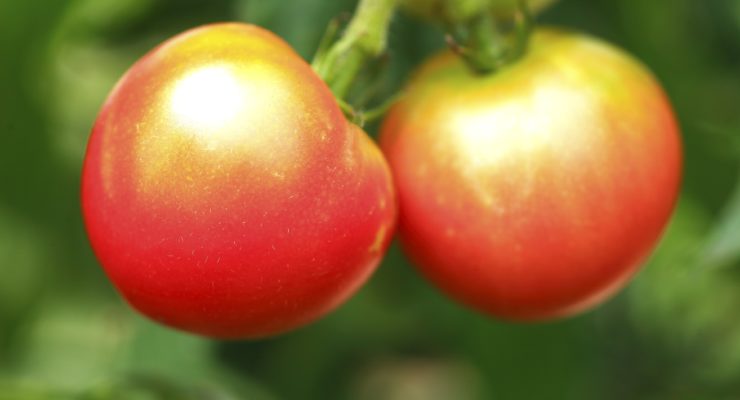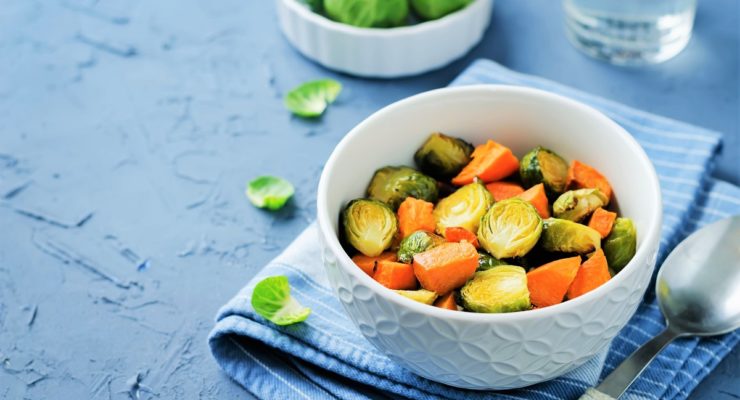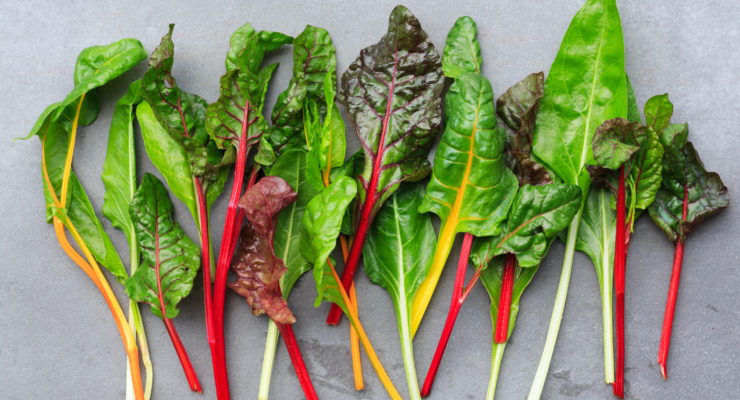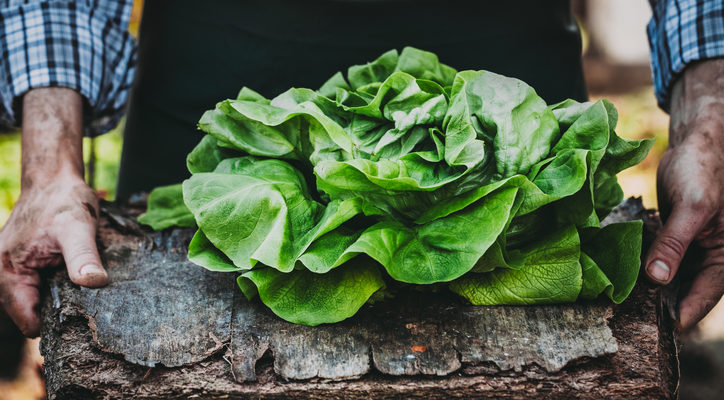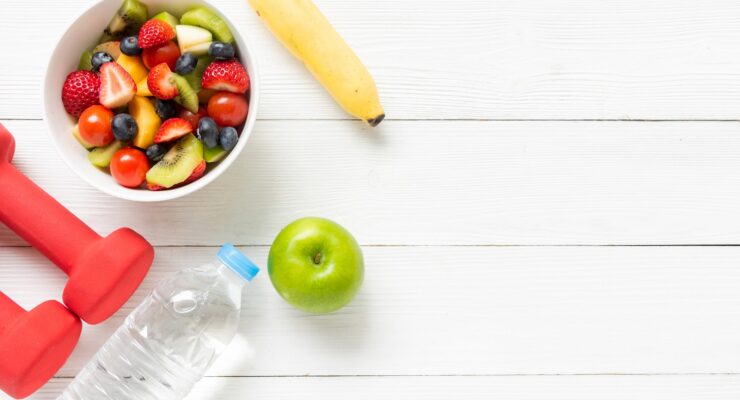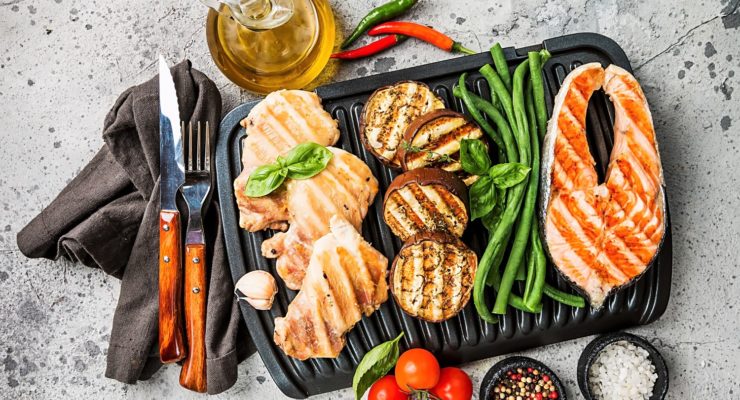Gardening with Scott: Growing Your Own Greens
Article posted in: Lifestyle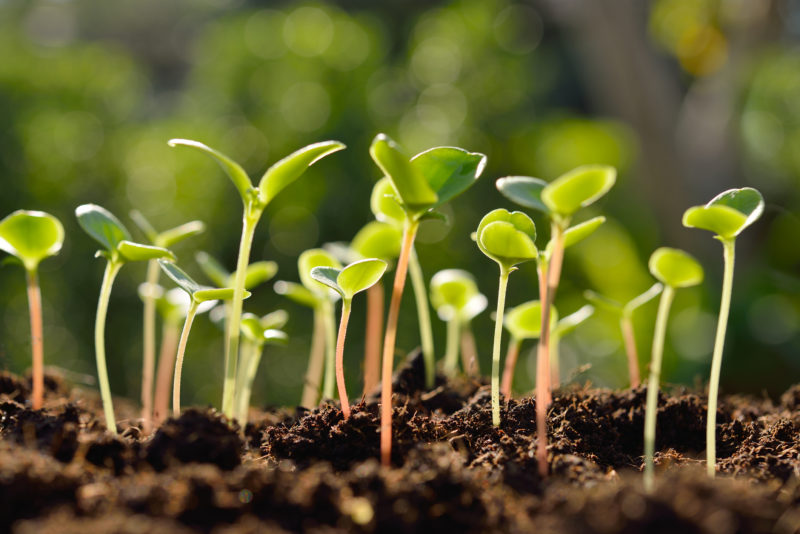
I believe the best vegetables for healthy eaters to grow are salad greens.
They’re so easy to plant from seeds and you can raise them in a small garden bed or in any large container. You can choose from among a wide variety of greens, including mild-flavored lettuce and spinach, also spicier types such as arugula and radicchio. You are sure to find one or many that suit your tastes.
Pick the right types (more on that below) and you can harvest greens everyday for months on end. Best of all, salad greens are very nutrient-dense, which means they are loaded with vitamins and minerals but low in calories. They are also a non-starchy vegetable, so you can eat as much of them as you want and stay on track to your weight loss goal. There are so many ways to enjoy greens, too—in salads, on sandwiches, in smoothies and even as a substitute for bread. For amazing green smoothie recipes you can make right at home, click here >
Ready to start your own patch of greens? Here’s what you need to know:
SEASON
Most greens grow best in spring and fall, when the days are sunny but cool with occasional rain. Swiss chard and romaine lettuce tolerate higher temperatures, if you want to grow greens through the summer.
For spring, you can plant as soon as nighttime temperatures stay above 45 degrees F and the soil is not too muddy. Plant a fall crop in late summer.
SITE
Salad greens need at least six hours of sunlight each day to produce a steady supply of leaves you can eat. The plants need soil that drains quickly after a rainstorm so that their roots don’t stay soggy. If you’re growing greens in a large pot, be sure to use a light potting mix.
VARIETIES
Your tastes can guide you to choosing the right salad greens for you. If you go for classic lettuce, you get the longest-lasting harvest if you select leaf varieties (sometimes called “cutting” lettuce) rather than iceberg and other types that form heads.
Cutting lettuces let you snip what you want to eat each day and then continue growing—once you harvest a head of lettuce, the plant is finished producing.
Mesclun and mache (pronounced “mahsh”) are like cutting lettuce, but with stronger, earthy flavors. Spinach, kale and mustard greens allow you to harvest as needed, too. For the most diverse flavors, colors and textures in your salad bowl, plant a mix of different kinds of greens.
SEEDS OR STARTS
Seeds are a simple and inexpensive way to plant salad greens. Just scatter them on top of the soil, cover them lightly with a bit of soil or peat moss and water lightly.
They sprout in about 10 days and can be ready for you to start harvesting 45 to 50 days after planting. If you want to begin eating your crop sooner or if you just want to feel a little more confident that you will succeed, look for a tray of transplants at your local nursery or home center. You won’t have as many varieties to choose from as you do with seeds, but you can be certain the plants will start growing right after you put them in the ground or pot. About 30 days after you plant the little seedlings, the first leaves will be ready for you to pick.
CARE AND FEEDING
Whether you start from seeds or transplants, they need to stay consistently moist for the first couple weeks so that they have the water they need to begin sprouting up and growing roots deep into the soil. That means watering them lightly everyday when it doesn’t rain. As the plants get bigger, you can water less frequently—a deep soaking once or twice a week is best. At that point, begin treating the plants to a dose of fertilizer once a week.
I always recommend liquid fish and seaweed plant food (available in garden centers and home stores). It’s organic, so your greens stay as pure as can be and it’s easy to apply with a watering can.
HARVEST TIME
The leaves are ready to start snipping and eating when they are about five inches long. To keep the plants growing and producing, use scissors to cut the outer leaves first, allowing the newer, inner leaves to stay and mature. Always leave behind at least three leaves, so the plant can absorb sunlight and grow more leaves. When the days grow very hot or cold, the leaves of many varieties start to become thicker and tougher. In late spring, you may even see a flower stalk come up from the center of the plant. Those are all signs that your harvest is done. Start again the next season.

